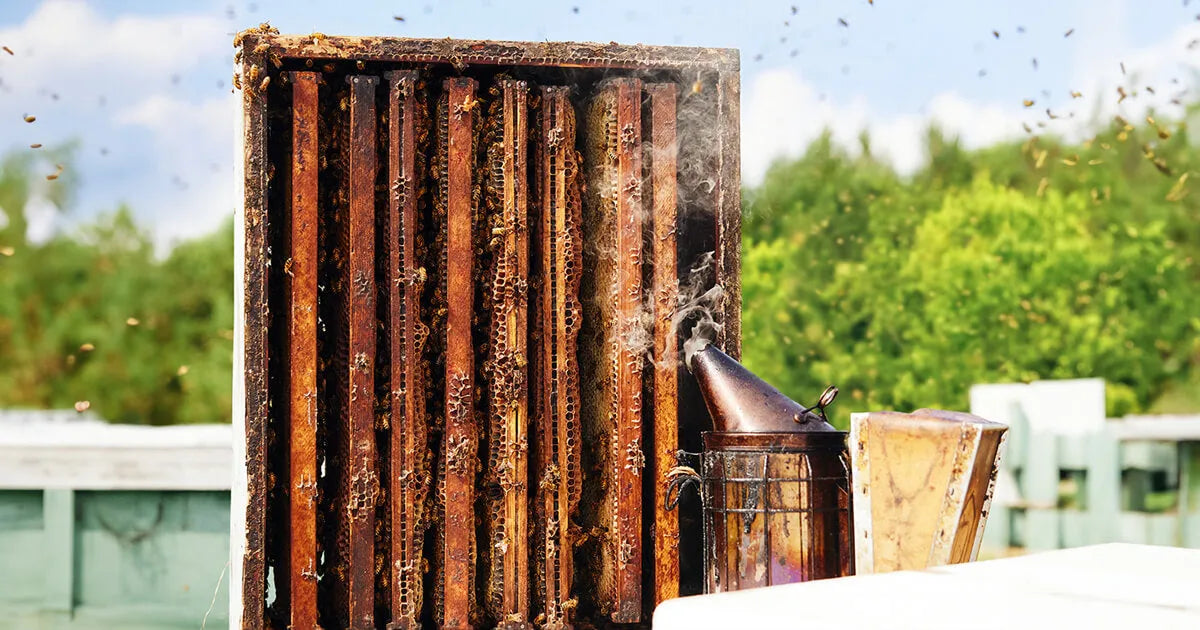Unveiling the Mystery of Why Bees Make Honey
Honey Facts
Have you ever picked up a bottle of pure honey and begun to wonder about all the great mysteries in life? You know, stuff like, “How much honey does one beehive make?”. Us too. And it turns out, the answer to this seemingly simple question is a fascinating journey into the world of bees and their incredible work ethic.
How many teeny tiny bees worked their entire lives to fill up one bottle of honey? Well, the short answer is: thousands and thousands.
A single worker bee can visit over a thousand flowers a day. Multiply a thousand flowers by thousands of workers, and the hive is rich in nectar . These thousands of bees work together to create an average of 30–60lbs. of honey per year. And then there are the overachiever bees, the ones that went to the bee Ivy Leagues, if those existed. These exceptional hives can produce up to 100lbs. of pure, raw, unfiltered honey in one year.
Honey production isn't a simple equation. More bees doesn’t always mean more honey. When it comes to how much honey a hive will produce, there are several factors at play:
- Floral Availability: The types of flowers in the vicinity of the beehive directly impact honey production (and flavor!) More flowers mean more nectar sources for bees to collect from.
- Climate and Weather: Weather conditions influence bee activity. Bees are more active on sunny days, enabling them to gather more nectar. Rainy or chilly days can make the bees feel lazy and slow down operations.
- Hive Health: A healthy hive with a booming bee population is most likely to quickly turn nectar into honey. Pest infestations and diseases hurt honey production.
- Beekeeper Management: Beekeepers use unique techniques to encourage honey flow, like providing supplementary food or adding more space within the hive for honey storage.
So, you've learned how much honey bees can produce, but why are bees so busy? Seriously: a strong hive typically produces about 2–3 times MORE honey than it actually needs.
As . That’s a good enough explanation for us. All this excess honey allows beekeepers to harvest the surplus, giving us humans (and the occasional hungry bear) the privilege of enjoying nature’s finest sweetener.
Now, you’ve learned that bees work hard for you. What can you do for them? Well, for starters, you can get wild in your backyard. Planting bee-friendly flowers not only adds beauty to your surroundings but also provides essential food sources for bees. By keeping bees happy, healthy, and busy, you're playing a crucial role in supporting these pollinators and everything that depends on them.
The journey from a bustling beehive to a bottle of Local Hive Honey is a tale of cooperation, dedication, and some sticky fingers. So, the next time you savor a spoonful of honey, remember: some bee worked hard to make it. A teeny tiny worker bee — who’s never gone on strike or had a tropical vacation — relentlessly foraged for hours to make that golden sweetness. Do her a favor and plant a few flowers the next time you pick up a bottle of pure, raw and unfiltered honey.

